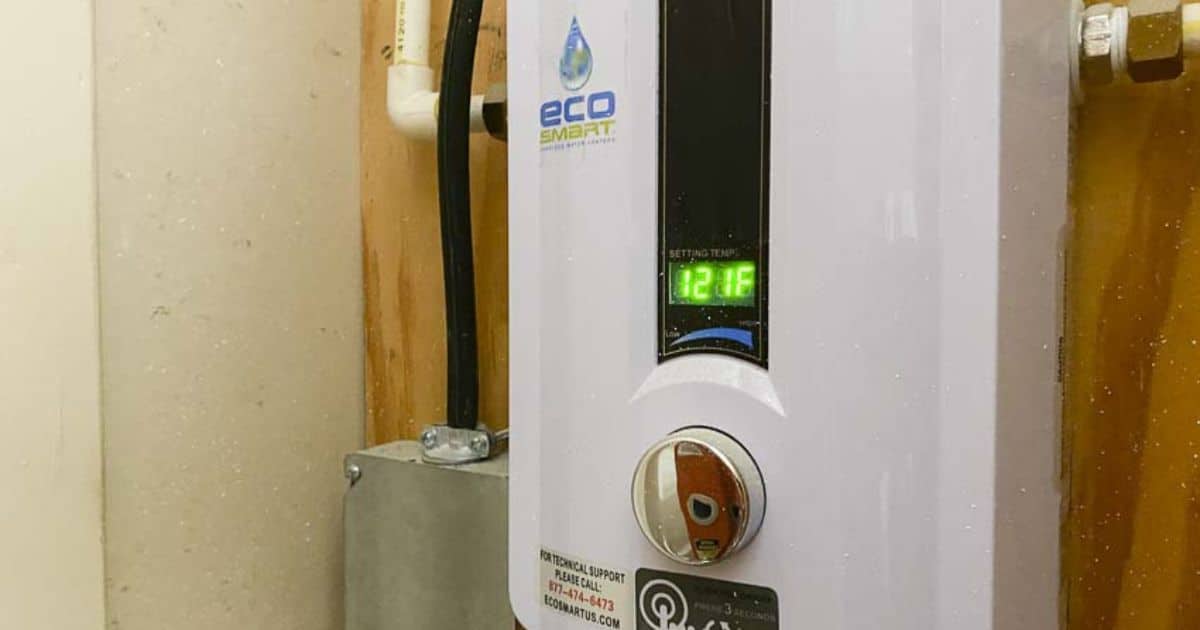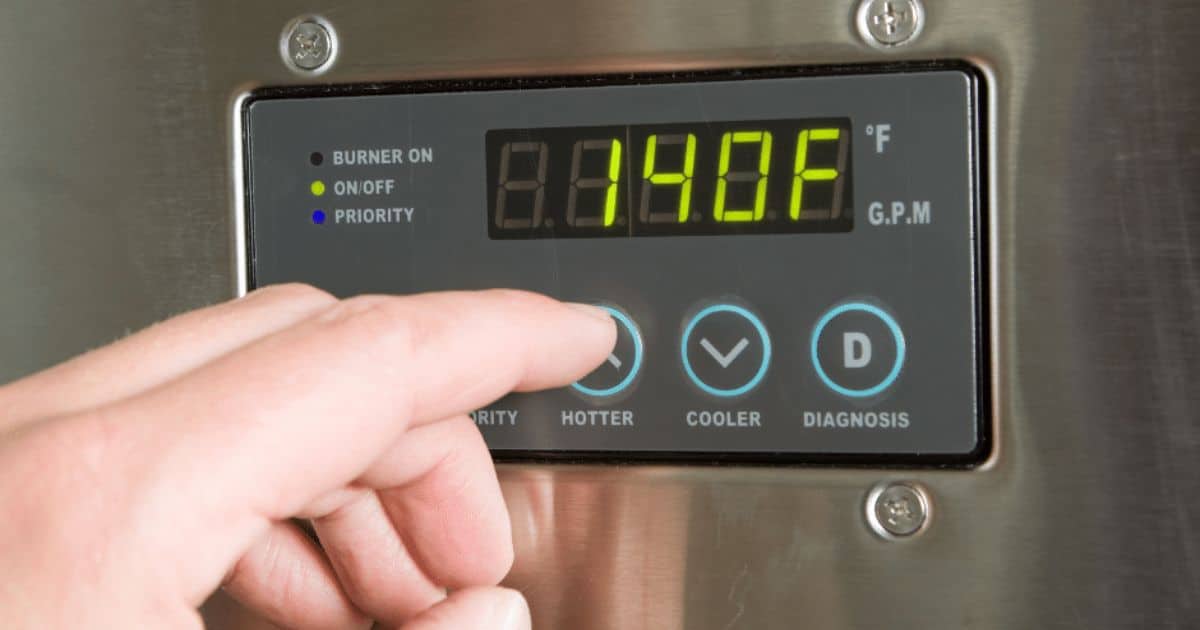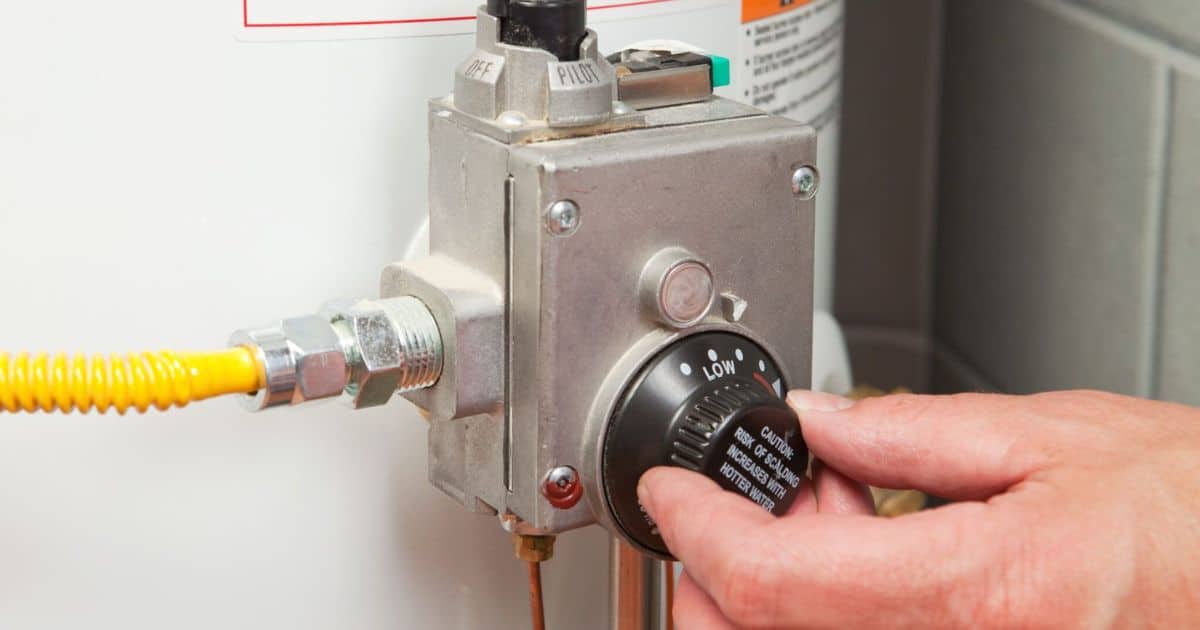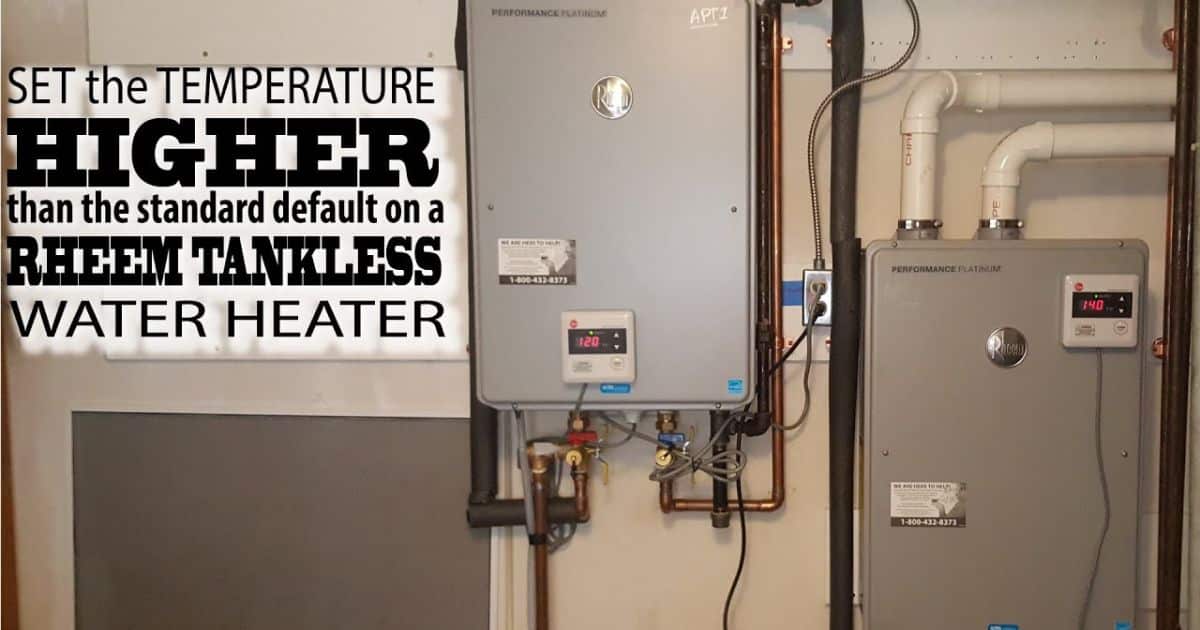When it comes to setting the temperature for a tankless water heater, there are several factors to consider. The optimal temperature range, safety precautions, energy efficiency benefits, and adjusting the temperature are all important factors that need to be taken into account.
Cold weather considerations, maintenance, and troubleshooting are also crucial aspects to keep in mind. To ensure that your tankless water heater is set at the right temperature, it is important to follow expert recommendations.
This article will provide you with valuable insights and guidance on setting the temperature for your tankless water heater, allowing you to enjoy a comfortable and efficient water heating experience.
Key Takeaways
- The recommended temperature range for most households is between 120°F (49°C) and 140°F (60°C).
- To prevent Legionella bacteria growth, the temperature should be set above 140°F (60°C).
- Lowering the temperature by 10°F (5.5°C) can save up to 5% on energy costs.
- Setting a safe temperature can prevent accidental burns, especially in households with children.
Factors to Consider
When determining the appropriate temperature for a tankless water heater, there are several factors that need to be taken into consideration. The first factor is the desired hot water temperature. It is important to strike a balance between comfort and energy efficiency.
The recommended temperature for most households is 120 degrees Fahrenheit (49 degrees Celsius). This temperature is hot enough to meet most daily needs while minimizing the risk of scalding. Another factor to consider is the incoming water temperature.
The colder the incoming water, the higher the temperature setting should be to achieve the desired hot water output. The flow rate of hot water required should be considered. If multiple faucets or appliances are being used simultaneously, a higher temperature setting may be necessary to maintain adequate hot water flow.
Lastly, it is important to consider any safety features that the tankless water heater may have, such as a temperature lock or anti-scalding system, to ensure the safety of the users.
Optimal Temperature Range

The optimal temperature range for a tankless water heater depends on various factors, including the desired hot water temperature, incoming water temperature, flow rate, and safety features. To ensure comfort and safety, most tankless water heaters are set at a default temperature of 120 degrees Fahrenheit (49 degrees Celsius).
This temperature can be adjusted to meet individual preferences. It is important to consider the risk of scalding when setting the temperature. A lower temperature can reduce this risk, but may result in inadequate hot water.
Conversely, a higher temperature can provide ample hot water but increases the risk of scalding. It is recommended to consult the manufacturer’s guidelines and local plumbing codes to determine the optimal temperature range for your specific tankless water heater.
Safety Precautions
Safety precautions should be taken when operating a tankless water heater, especially in the context of the water heater thermocouple. While these appliances offer numerous benefits, such as continuous hot water supply and energy efficiency, it is important to be aware of potential safety hazards. Ensuring a clean water heater thermocouple is essential for optimal performance and overall safety.
Here are some precautions to consider:
| Safety Precautions |
|---|
| 1. Regular maintenance and inspections |
| 2. Proper ventilation |
| 3. Adequate clearance around the unit |
Regular maintenance and inspections are essential to ensure the safe operation of a tankless water heater. This includes checking for any leaks, loose connections, or signs of corrosion. Proper ventilation is crucial to prevent the buildup of harmful gases, such as carbon monoxide.
It is important to have sufficient clearance around the unit to allow for proper airflow and prevent overheating.
Energy Efficiency Benefits
To maximize energy efficiency, proper temperature settings are crucial for a tankless water heater. By setting the temperature at an optimal level, homeowners can enjoy several energy efficiency benefits.
Firstly, reducing the temperature can result in lower energy consumption, as the water heater will only need to heat the water to a lower temperature. This can lead to reduced energy bills and a smaller carbon footprint.
Secondly, a properly set temperature can prevent excessive heat loss through the pipes and tank, ensuring that the heated water reaches the desired location without unnecessary energy wastage. Maintaining the right temperature can also extend the lifespan of the unit, as it reduces the strain on the components.
Overall, setting the temperature appropriately can provide significant energy efficiency benefits for tankless water heaters.
Adjusting the Temperature

One should adjust the temperature of a tankless water heater to ensure optimal performance and efficiency. Here are five key considerations when adjusting the temperature:
- Energy efficiency: Lowering the temperature can result in energy savings, as the unit won’t need to work as hard to heat the water.
- Bacterial growth: Higher temperatures help prevent the growth of harmful bacteria in the water.
- Hot water demand: Adjusting the temperature based on the household’s hot water needs can ensure a constant supply without excessive energy consumption.
- Water hardness: Higher temperatures can exacerbate mineral buildup in hard water areas, so adjusting the temperature can help prolong the lifespan of the tankless water heater.
Considering these factors, it is important to also address cold weather considerations when setting the temperature for a tankless water heater.
Cold Weather Considerations
When considering ‘Cold Weather Considerations’ for a tankless water heater, it is important to take into account the impact of lower temperatures on its performance and efficiency. Cold weather can significantly affect the performance of a tankless water heater.
As the incoming water temperature is colder and requires more energy to heat up. This can result in a decreased flow rate and reduced hot water output. To ensure optimal performance in cold weather, it is recommended to insulate the water heater and the pipes to minimize heat loss.
Adjusting the temperature setting slightly higher during colder months can help compensate for the lower incoming water temperature. The table below illustrates the recommended temperature settings for various cold weather conditions:
| Outside Temperature | Recommended Temperature Setting |
|---|---|
| Above freezing | 120°F |
| Below freezing | 125°F |
| Extreme cold | 130°F |
Maintenance and Troubleshooting
Regularly maintaining and troubleshooting a tankless water heater is crucial for ensuring its optimal performance and longevity. To keep your tankless water heater in top shape, consider the following maintenance and troubleshooting tips:
- Flush the system regularly to remove mineral buildup
- Check for any leaks or drips in the plumbing connections
- Inspect and clean the air intake and exhaust vents to prevent blockages
- Test the pressure relief valve to ensure it is working properly
- Monitor the water temperature and adjust if necessary to prevent scalding
Expert Recommendations

For optimal performance and safety, it is important to adhere to expert recommendations regarding the temperature at which a tankless water heater should be set. The ideal temperature setting for a tankless water heater typically ranges between 120°F (49°C) and 140°F (60°C).
This temperature range ensures that hot water is delivered at a safe and comfortable level for daily use while also preventing the growth of harmful bacteria. It is worth noting that some manufacturers may provide specific temperature guidelines for tankless water heaters.
So it is recommended to consult the product manual or contact the manufacturer for precise recommendations.
FAQ’s
How Long Does It Take for a Tankless Water Heater to Provide Hot Water?
The time it takes for a tankless water heater to provide hot water varies depending on factors such as the unit’s size and power. Generally, it takes a few seconds to a minute to heat the water to the desired temperature.
Can a Tankless Water Heater Be Installed in Any Home?
Tankless water heaters can be installed in most homes, as they do not require a storage tank. However, it is important to consult with a professional to ensure proper sizing and installation.
Are Tankless Water Heaters More Expensive to Purchase and Install Compared to Traditional Water Heaters?
Tankless water heaters provide energy-efficient and cost-effective solutions for homeowners. While the initial purchase and installation may be higher compared to traditional water heaters, the long-term savings and convenience make them a worthwhile investment.
Do Tankless Water Heaters Require Regular Maintenance?
Tankless water heaters require regular maintenance to ensure optimal performance and longevity. This includes descaling the heat exchanger, checking for gas leaks, and inspecting the ignition system. Regular maintenance helps prevent issues and ensures efficient operation.
Can a Tankless Water Heater Be Used for Both Hot Water and Heating the Home?
Yes, a tankless water heater can be used for both hot water and heating the home. It provides instant hot water and efficient heating, making it a versatile and convenient option for homeowners.
Conclusion
Setting the temperature of a tankless water heater requires consideration of factors such as safety, energy efficiency, and cold weather conditions. Experts recommend maintaining the optimal temperature range to ensure comfort and prevent scalding.
Adjustments can be made as needed, taking into account maintenance and troubleshooting requirements. Like a precise thermostat, setting the tankless water heater temperature correctly is essential to achieve a balance between safety, efficiency, and comfort.











